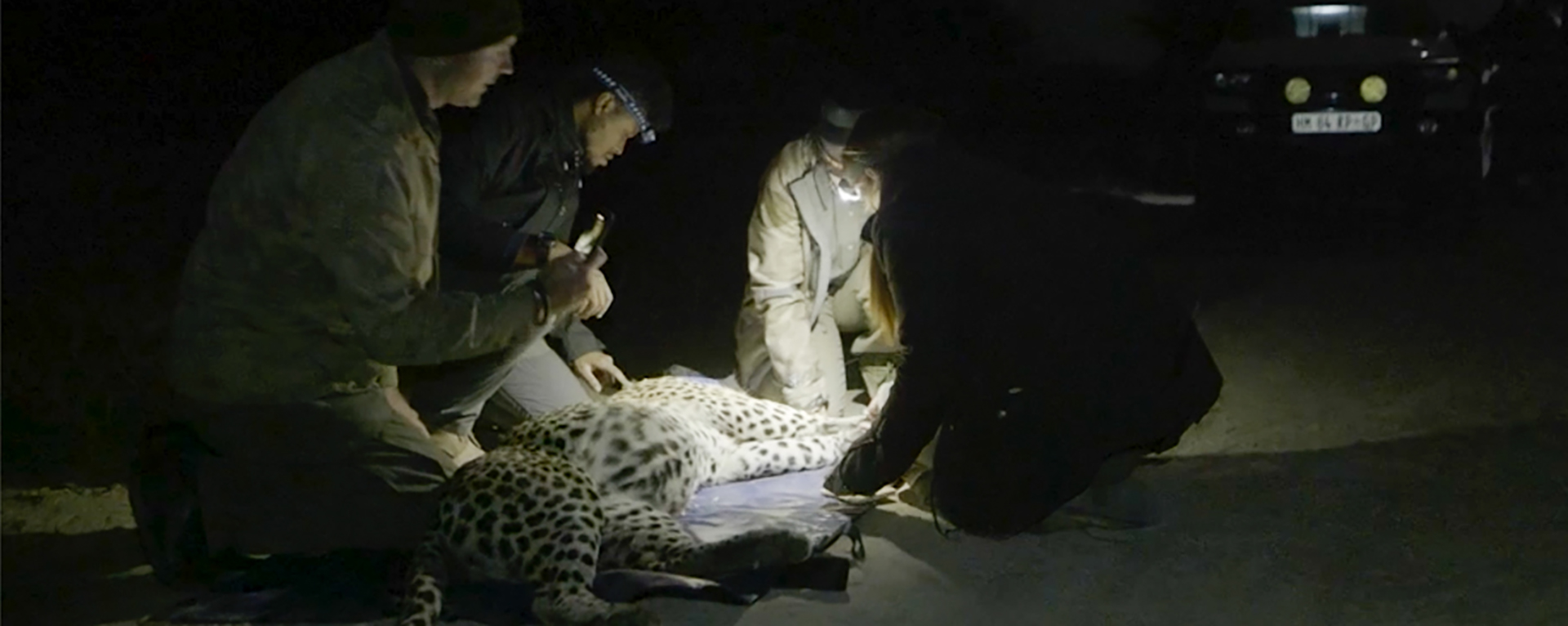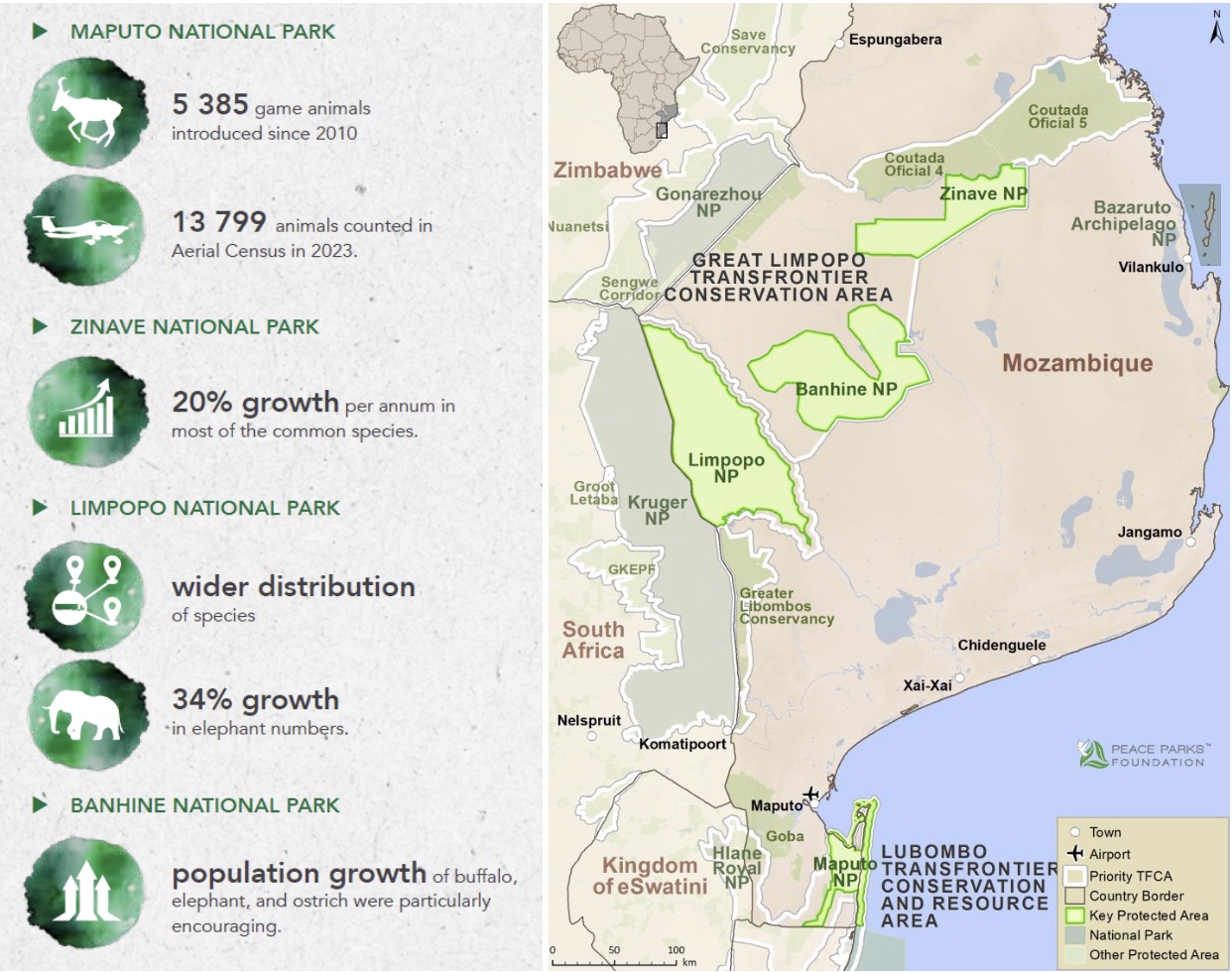WHEN NATURE TAKES OVER
Conservation at scale

Rewilding projects are a great source of pride for Peace Parks Foundation and those we collaborate with. By the end of 2023, Peace Parks Foundation had rewilded 18 167 animals to previously degraded areas and we have seen the populations grow to a head count of an estimated 100 000 in the parks we co-manage. To see animals thriving and naturally replenishing the lands fuels our determination in the work that we do.
In August 2023, five spotted hyenas were introduced to Maputo National Park in Mozambique, bringing the ongoing rewilding efforts by the National Administration for Conservation Areas (ANAC) and Peace Parks, full circle. The greater ecosystem in this remarkable landscape is thriving. With antelope numbers on the rise, apex predators can now claim their vital place.

Our partnerships with ANAC and Exxaro Resources, with the support of the governments of Mozambique and South Africa, continued to reap immense rewilding rewards in Zinave National Park. With the support of Conservation Solutions, the last in a series of three landmark rhino translocations from South Africa took place in 2023. Five white and five black rhino were successfully translocated, bolstering the already thriving headcount of translocated animals to a total of 37. In addition to this, healthy new calves of both species were born, one of which was a critically endangered Black Rhino – affirming that the herds are healthy and thriving.

Rangers have been excited to report sightings of several prides of lion that have made their way to Zinave and Limpopo national parks in the pursuit of food and settled in the thriving ecosystem. This is yet another testament to the restored health of these landscapes, and the importance of ecological linkages between protected areas.
A full aerial census was undertaken in Zinave, Limpopo, Banhine, and Maputo national parks in 2023 and from this, we learned that numbers have more than doubled in all areas since starting reintroductions in partnership with ANAC and thanks to generous funding from donors.
In Maputo National Park, where we have collectively introduced over 5 385 game animals since 2010, we counted 13 799 animals – a three-fold increase. Zinave National Park, where we have moved 2 540 animals since 2011, is showing a 20% growth per annum in most of the common species. Limpopo National Park, where we have introduced 4 789 animals since 2001, including 111 elephant in 2003, revealed a wider distribution of species and 34% growth in elephant numbers.
The rewilding of Banhine is just beginning and the first translocations are scheduled for 2025. In the first-ever census there, populations of buffalo, elephant, and ostrich were particularly encouraging.
Across all four parks, results speak to collaborative efforts making a measurable positive impact in our areas of operation. The assisted and natural process of rewilding is a crucial ecological link that connects biodiversity and climate change by harnessing the power of wildlife to anchor carbon.

In Vwaza Marsh Wildlife Reserve, 21 puku, 68 sable antelope, 47 waterbuck and eight zebra found a new home in 2007.
In 2013, a wildlife sanctuary measuring 220 km2 was established as part of Simalaha Community Conservancy. The first wildlife translocation to the Simalaha Community Conservancy took place on 6 October 2013, and since then, 2 145 animals of 13 species have been rewilded there, including red lechwe, puku, eland, sable, hartebeest, waterbuck, roan antelope, buffalo and giraffe.
Sioma Ngwezi National Park has seen 695 animals translocated there since 2016, including 410 impala, 151 wildebeest, 54 sable antelope and 35 buffalo.
In 2016, 34 elephant were translocated to Nyika National Park which had lost the vast majority of its natural herds.
Rewilding Africa: Hope in Action




